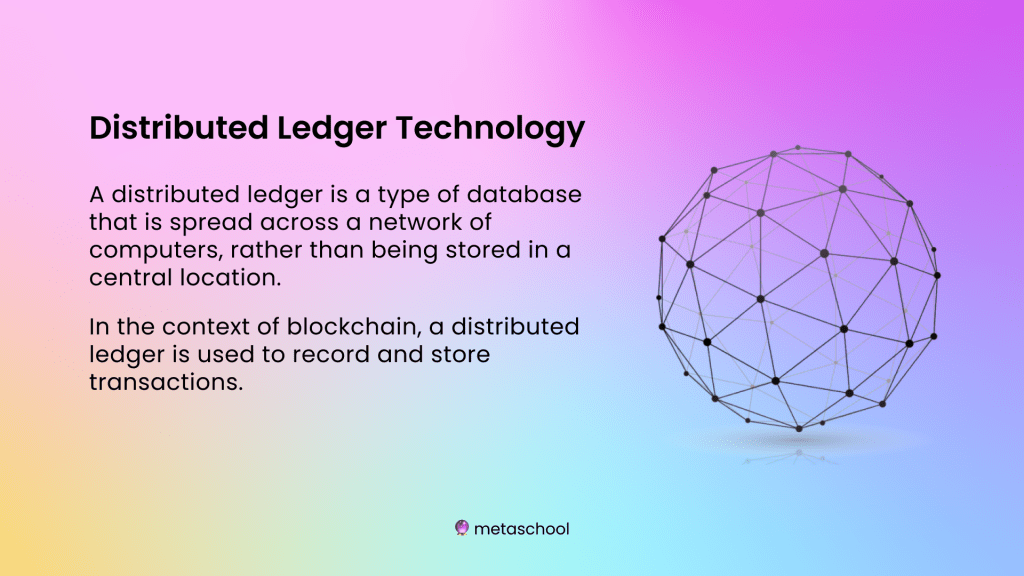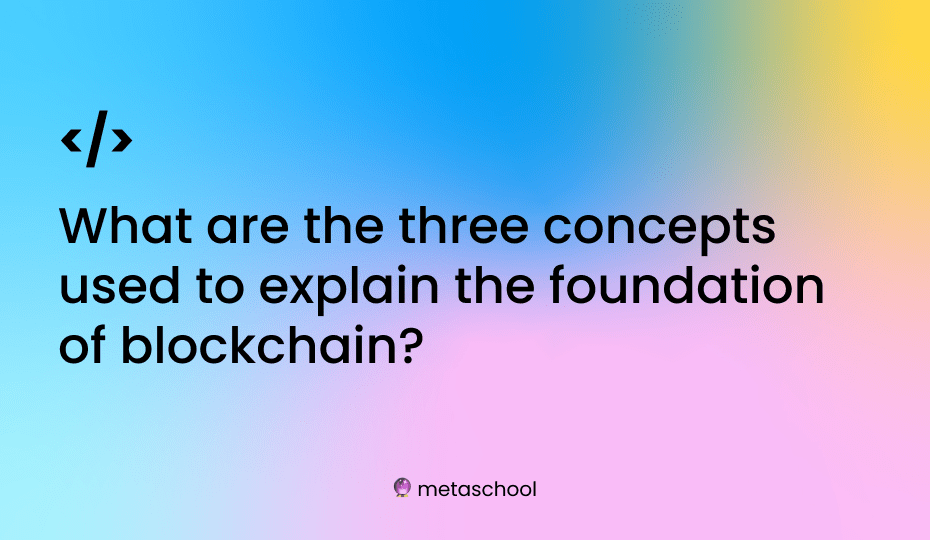Table of Contents
Blockchain technology is a decentralized, secure and transparent technology that uses distributed ledger, cryptography and consensus mechanism to record, store and validate transactions. It is a powerful tool that has the potential to revolutionize several industries.
What are the three concepts used to explain the foundation of blockchain?
1) Distributed ledger technology
A distributed ledger is a type of database that is spread across a network of computers. In the case of blockchains, this network is decentralized, meaning that no single entity controls or maintains the ledger. Instead, it is maintained by a network of participants, each of whom has a copy of the ledger.

This allows for greater transparency and security, as any changes to the ledger must be agreed upon by a majority of the participants. An example of this technology is how blockchain is used in the supply chain management, where the distributed ledger is used to track the movement of goods from the manufacturer to the consumer.
2) Cryptography
Cryptography is the practice of securing communications through the use of codes. In blockchain, advanced cryptographic techniques are used to secure transactions and ensure the integrity of the data stored on the ledger.

For example, a unique digital signature is generated for each transaction, which acts as a “fingerprint” that can be used to confirm the identity of the sender.
Additionally, each block in the blockchain is linked to the previous block using a cryptographic hash function, which helps to ensure the integrity of the data and prevent tampering.
3) Consensus mechanism
A consensus mechanism is a method of ensuring that all participants in the network agree on the current state of the ledger. This is necessary to prevent conflicts and ensure the integrity of the data.

One of the most widely used consensus mechanisms in blockchain is called proof-of-work. In proof-of-work, participants in the network, called “miners”, compete to solve a complex mathematical problem. The first miner to solve the problem is able to add a new block to the blockchain, and in return, they are rewarded with a certain number of cryptocurrency.
Another example is proof-of-stake, where instead of solving complex mathematical problem, participants also known as “validators” are chosen randomly to validate a block based on how much cryptocurrency they hold.
Hopefully now you’re clear on what are the three concepts used to explain the foundation of blockchain. If you want to learn more, explore the Metaschool blog or better yet, check out some of our web3 courses and put this knowledge to practice.
How does consensus work in a blockchain network?
There are various consensus mechanisms in blockchain and each has its own unique working process. These mechanisms ensure that there is a unanimous agreement or disagreement amongst the masses. In the case of blockchain, these masses are nodes which are computer servers responsible for validating a crypto transaction. These nodes are intertwined and closely connected to each other. A consensus mechanism specifically ensures that all the nodes are on one page. It also ensures that in case a computer server – a node – gets corrupted or stops working, the rest of the nodes should not. This is how consensus works in a blockchain network.
What are the 4 main components of blockchain?
The 4 main components of blockchain are nodes, ledger, assets and consensus mechanism. Together these comprise a blockchain.
Which data is stored on a block in a blockchain?
A block in a blockchain has all the transaction data stored in it. Each block has a certain capacity and the transactions are stored in groups in each block. Thus, all the transaction records can be found on a block.
